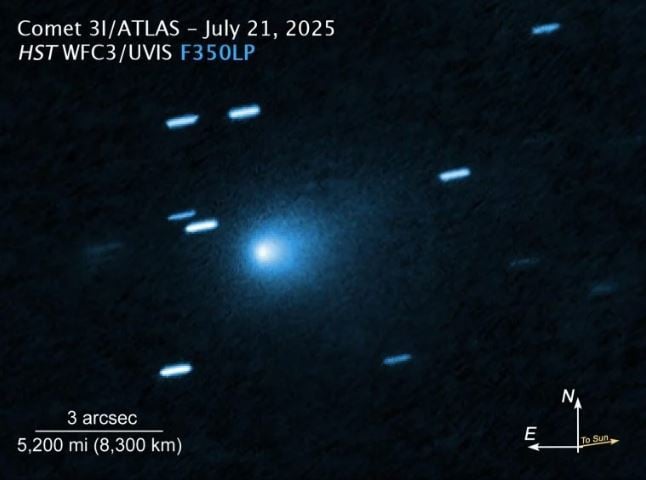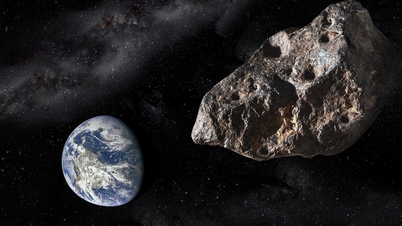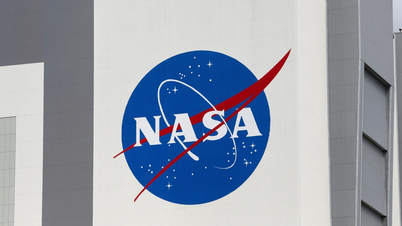3I/ATLAS is hurtling at a record-breaking speed of 130,000 mph (209,000 km/h), according to researchers. The object is thought to have drifted for billions of years in interstellar space before approaching our planetary system.
The most detailed image ever
NASA's Hubble Space Telescope captured the most detailed image yet of 3I/ATLAS, one of several observatories in NASA's fleet tasked with analyzing the comet to learn more about its size and physical characteristics.
Hubble data show that the comet's solid icy core ranges from 1,000 feet (320 meters) to no more than 3.5 miles (5.6 kilometers) in diameter. While that narrows the size estimate compared to previous ground-based observations, even Hubble's powerful optics have not yet been able to directly observe the solid core.

This image of interstellar comet 3I/ATLAS was taken by the Hubble Space Telescope's Wide Field Camera on July 21, 2025. Credit: NASA.
In addition to Hubble, other NASA space observatories such as the James Webb Space Telescope, the Transiting Exoplanet Survey Satellite (TESS), the Neil Gehrels Swift Observatory and the W.M. Keck Observatory also participated, promising to provide more detailed data on the chemical composition of comets.
Dust tail and abnormal activity
Hubble observations revealed a jet of dust erupting from the comet's illuminated side, with a faint dust tail trailing behind. The rate of dust loss is comparable to that of comets born in the Solar System, or comets found within 480 million km of the Sun.
What makes 3I/ATLAS unique is its origins. It began its journey in a planetary system somewhere in the Milky Way. Its 130,000 mph speed is also the fastest ever recorded for an object of its type. Scientists think that over billions of years, collisions with stars and nebulae have continually added momentum to 3I/ATLAS, pushing it to its current extraordinary speed.
Mystery of origin
“Nobody knows where this comet came from. It’s like seeing a rifle bullet for a millisecond. You can’t predict exactly where it came from on its path,” said David Jewitt, professor at the University of California, Los Angeles, who led the Hubble team.
He asserts that 3I/ATLAS is just one of many “interstellar visitors” that are being gradually discovered thanks to modern survey instruments. “We have passed a threshold of observations of the universe before,” Jewitt emphasizes.
Comet 3I/ATLAS was discovered on July 1, 2025, by the Asteroid Last Alert System (ATLAS) - funded by NASA and developed by the University of Hawaii - at a distance of 420 million miles from the Sun. This is the third interstellar comet ever recorded in scientific history.
3I/ATLAS is expected to remain visible to ground-based telescopes until September 2025. After that, it will pass too close to the Sun to be tracked. The third interstellar comet is expected to reappear on the other side of the Sun in early December 2025.
Source: https://doanhnghiepvn.vn/cong-nghe/kinh-vien-vong-hubble-phat-hien-sao-choi-lao-qua-he-mat-troi-voi-van-toc-ky-luc/20250819074919213






![[Photo] Binh Trieu 1 Bridge has been completed, raised by 1.1m, and will open to traffic at the end of November.](https://vphoto.vietnam.vn/thumb/1200x675/vietnam/resource/IMAGE/2025/10/2/a6549e2a3b5848a1ba76a1ded6141fae)












































































![[Infographics] Biography of Central Party Committee Member, An Giang Provincial Party Secretary Nguyen Tien Hai](https://vphoto.vietnam.vn/thumb/402x226/vietnam/resource/IMAGE/2025/10/3/92491af6e2714aeb80cb1cdf831eb18a)

















Comment (0)